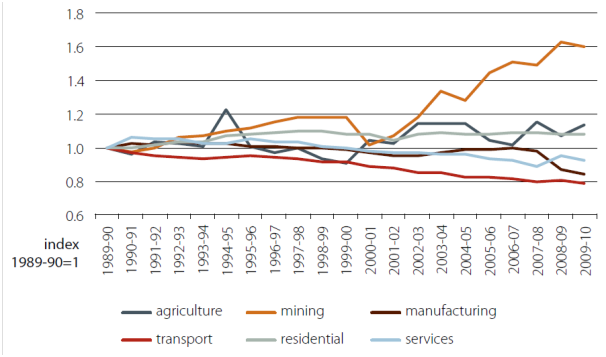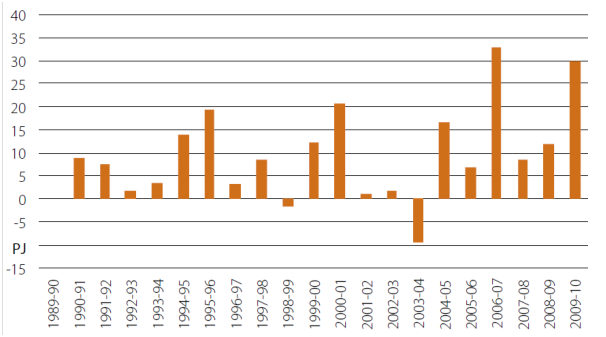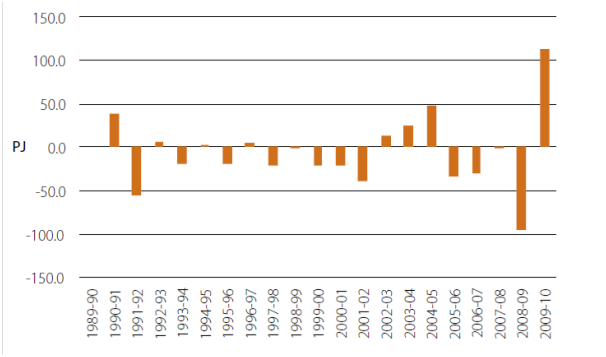Abbott's base level logic
On Monday a journalist noted that if Tony Abbott is as successful at expanding economic output as he promises, then a number of firms could be expected to increase their emissions to levels higher than they’d produced in the past. Therefore, Abbott was asked, wouldn’t that mean a substantial number of firms would be paying penalties for exceeding their historical emission baselines.
Tony Abbott replied:
On its surface this all seems to make logical sense and the 50 per cent reduction in emissions intensity sounds pretty impressive. But it sadly misses a range of complexities when you delve into the detail which means some firms will exceed their baselines, if they are set with any level of integrity, and should be paying penalties.
Although the devil is very much in the detail. For example, the Coalition was unwilling to tell Climate Spectator the method they’ll use for setting emissions intensity baselines. Will they be done on emissions per dollar of economic value-add or per unit of physical production (a tonne of steel, or a barrel of oil refined, etc)?
Firstly, it’s worth noting that a significant proportion of this 50 per cent reduction in emissions intensity is due to one-off benefits from outlawing land clearing – and nothing to do with energy efficiency.
Second, when looked at in aggregate the energy intensity of the Australian economy has dropped by about 20 per cent between 1990 and 2010, according to the Bureau of Resource and Energy Economics. However, that change has been very far from uniform. Much of the change isn’t because individual firms have each become 20 per cent more energy efficient in producing a dollar of value but rather because the less energy-intensive parts of the economy, like services, grew more rapidly while energy-intensive parts, like metals manufacturing, grew more slowly.
If we delve a level down we can in fact see in the chart below that some industry sectors, most notably mining, actually suffered a worsening in their energy-intensity level (the amount of energy consumed to produce a dollar of economic value) while agriculture has also deteriorated and a number of other sectors have barely improved. If emissions intensity is measured by economic value add, then it's not clear that all firms will avoid paying penalties.
Trends in energy intensity indicators across sectors of the Australian economy
(a declining line represents a reduction in energy use per unit of economic output).

Source: Bureau of Resource and Energy Economics (2012)
In relation to mining, considering the prices of the resources they were pulling out during this period were increasing in value the sector was most definitely suffering from declining energy efficiency. The chart below, by Bureau of Resource and Energy Economics, finds that energy efficiency worsened in mining every year bar two,1998-99 and 2003-04.
Yearly change in energy consumption of mining due to the efficiency effect
(upward bar indicates energy consumption increased because the amount of energy used per unit of economic value increased)

Source: Bureau of Resource and Energy Economics (2012)
Now, this wasn’t because they were being wantonly wasteful but rather, according to BREE, due to: “the need to exploit deeper and lower grade ores – particularly base metals such as copper, nickel, lead and zinc.” So, the odds are several mining facilities will be exceeding historical emissions intensity baselines and should therefore end up paying penalties.
If we look at manufacturing the story is better but not quite as simple as Tony Abbott might imagine. The chart below illustrates that on average, across 1990-2010, energy efficiency improved but there have been some years where it has worsened, 2009-10 being a notable one.
Yearly change in energy consumption of manufacturing due to the efficiency effect
(upward bar indicates energy consumption increased because the amount of energy used per unit of economic value increased).

Source: Bureau of Resource and Energy Economics (2012)
To illustrate how this might play out, let’s imagine a baseline was set using the years 1998-99 to 2001-02. The odds are some firms would be paying a penalty in the years 2003-04 and 2004-05, even though they might also be able to receive money from the Direct Action Emission Reduction Fund in 2008-09, and then pay the penalty again on 2009-10.
This little example also serves to illustrate why it’s so important that the Emissions Reduction Fund incorporates penalties, not just incentives. And not only that, it also shows why the penalties must be of a value at least as high as the incentives. That’s because even though firms in some years might reduce their emissions, this benefit for the climate can be completely offset the next year when they increase emissions. Overall emissions may end up no lower than business as usual when you average out the years. If we only provided incentives and no penalties firms could pocket taxpayers money, while emissions would end up no lower than if the scheme hadn’t existed.
Now of course without individual firm or even individual facility data it’s hard to be certain of exact outcomes. Also, if the emissions intensity baselines were based on physical production – rather than economic value – we might get a different answer. For example, analysis by Reputex suggests that most firms wouldn’t exceed baselines based on physical production.
But this creates its own problems. If firms can be expected to naturally reduce emissions intensity per unit of physical production then taxpayers could end up giving firms money for what are illusory emission reductions.
In the end what’s safe to say is that it’s not quite as simple as Abbott’s homely logic.
















